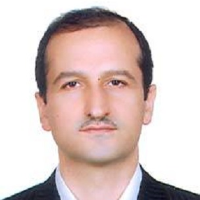Scapulohumeral Rhythm, Kyphosis, and Forward Shoulder in Iranian Wushu Athletes and Non-athletes
Daily living activities require the composition and coordination of scapulothoracic and glenohumeral joints. In athletes, the position of the scapula have a direct effect on their athletic performance due to its relationship with shoulder function. This study aims to investigates the scapulohumeral rhythm, kyphosis and forward shoulder in Iranian Wushu athletes and non-athletes.
This is a quasi-experimental study. Participants were 27 wushu athletes (Age: 23.29±1.72 years, height: 1.72±0.20 m, weight: 69.50±11.50 kg, body mass index: 22.25±3.29 kg/m2) and 27 non-athletes (Age: 25.92±2.85 years, height: 1.75±0.07 m, weight: 69.36±11.73 kg, body mass index: 22.53±3.08 kg/m2) which were selected using a convenience sampling method. The kyphosis angle was assessed with a flexible ruler and the forward shoulder was assessed using the photographic method. The distance of the scapula from the spine was assessed using the lateral scapular slide test. Independent t-test was used to examine the differences between the groups, and Pearson correlation test was used to examine the relationship between the study variables. Statistical analysis was performed in SPSS software, version 24. The significance level was set at 0.05.
The angles of kyphosis and forward shoulder had a significant relationship with the distance of the scapula from the spine at 0, 45 and 90 degrees of arm abduction (P≥0.05) such that with increasing kyphosis and forward shoulder angles, the distance increased. In non-athletes, there was a significant difference between the distances of dominant and non-dominant scapula from the spine in 0 degree (P=0.01) and 45 degrees (P=0.02) of arm abduction; in 90 degrees, no significant difference in non-athletes was observed. Results of independent t-test showed a significant difference in kyphosis and forward shoulder angles and in the distance of the scapula from the spine at different degrees of arm abduction between the two groups (P≤0.05), which were greater in athletes than in non-athletes.
The kyphosis and forward shoulder angles have a relationship with the position of the scapula on the spine in professional Wushu athletes. More attention should be paid to these changes and their evaluation in terms of injury and musculoskeletal disorders.
- حق عضویت دریافتی صرف حمایت از نشریات عضو و نگهداری، تکمیل و توسعه مگیران میشود.
- پرداخت حق اشتراک و دانلود مقالات اجازه بازنشر آن در سایر رسانههای چاپی و دیجیتال را به کاربر نمیدهد.



